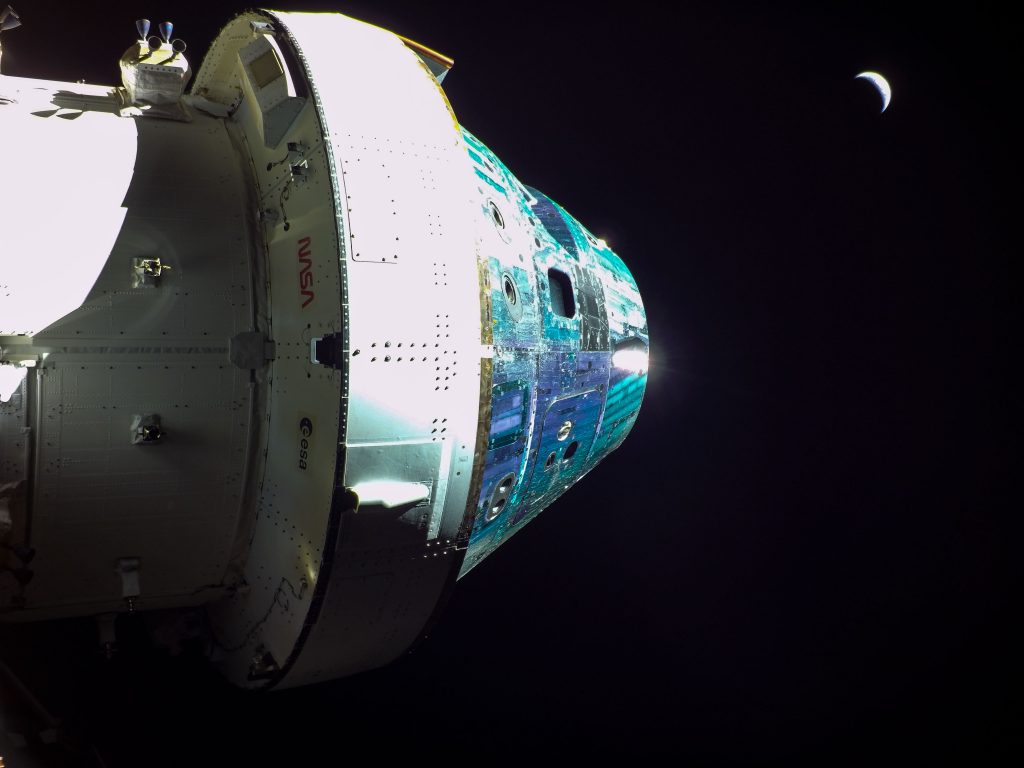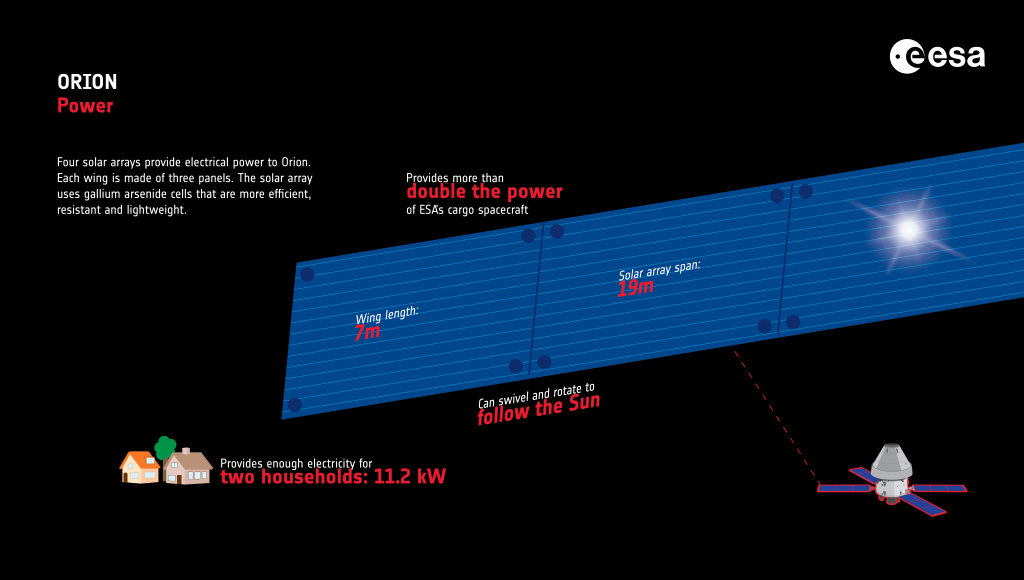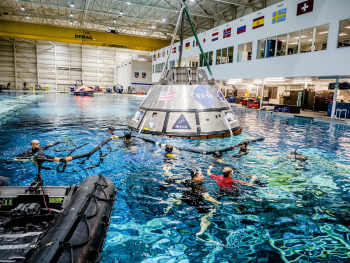Orion performed the second return trajectory correction burn on 4 December, flight day 19, at 17:43 CET (16:43), using the auxiliary thrusters and increasing the spacecraft’s speed by 1.87 km/h or 0.52 m/s.

Yesterday, after acquiring signal with NASA’s Deep Space Network’s Canberra ground station at 19:41 CET (18:41 GMT), Orion experienced an issue with one of the power conditioning distribution units (PCDU). These boxes regulate power received from the solar array wings and turn it into a nice even supply before distributing the electricity it to where it is needed. Four of the latching current limiters that connect to the propulsion and heater subsystems were switched off. Teams confirmed the system was healthy and successfully repowered the components using the unit. There was no interruption of power to any critical systems, and there were no adverse effects to Orion’s navigation or communication systems.

Teams are examining whether a contributor to this issue is related to a previous power configuration test to investigate instances where one of the eight units opened without a command. The umbilical was successfully commanded closed each time and there was no loss of power flowing to avionics on the spacecraft.

Engineers also continue to work plans to accomplish several additional test objectives during Orion’s journey back to Earth. The Artemis I mission putting the Orion spacecraft to the test and engineers are learning how Orion operates in space, allowing them opportunities to validate performance models and learn as much as possible about the spacecraft.
In preparation for Orion’s return to Earth, the team from NASA’s Exploration Ground Systems Program and the US Navy, who will recover the Orion crew capsule from the Pacific Ocean, completed its final training day at sea, using a mock capsule in the water for divers and small boats to practice open water recovery procedures.

On 5 December, Orion will make its closest approach to the Moon, flying 127 km above the lunar surface. Using the Moon’s gravity it will perform a return powered flyby at 17:43 CET (16:43 GMT) with the European Service Module firing thrusters for about 3 minutes and 27 seconds, the largest yet in the Artemis mission. The burn will change Orion’s speed by around 1054 km/h. The return powered flyby is the last large maneuver of the mission, with only smaller trajectory corrections to target Earth remaining.
Watch the lunar flyby on NASA television below. Coverage starts at 15:00 CET (14:00 GMT). Orion will lose communications with Earth for approximately 31 minutes beginning at 17:40 CET (16:40 GMT), as it flies behind the far side of the Moon, immediately after the return powered flyby thruster burn.
Just after 23:30 CET (22:30 GMT) on 4 December, Orion was traveling 357 617 km from Earth and 38 420 km from the Moon, cruising at 4950 km/h.
Images from the mission are available on NASA’s Johnson Space Center Flickr account and Image and Video Library. When bandwidth allows, live views from Orion are available in real-time.

 Automated Transfer Vehicle page
Automated Transfer Vehicle page ATV blog archive
ATV blog archive
 NASA Orion page
NASA Orion page NASA Artemis
NASA Artemis Airbus Orion page
Airbus Orion page
Discussion: one comment
Hi, I’m an independent space and Moon exploration writer. I came here to say how much I love ESA’s Orion blog; it consistently has more details, links, pictures and diagrams than NASA’s official Artemis Blog! I shared it with all my readers via my latest Moon Monday newsletter edition: https://blog.jatan.space/p/moon-monday-issue-106
To the Moon!